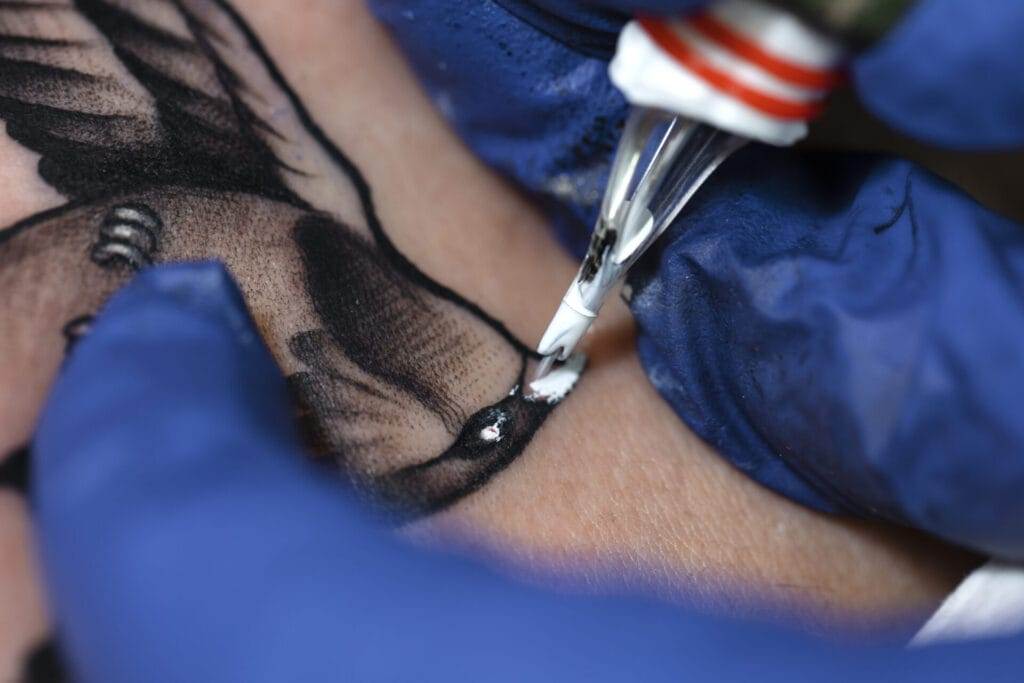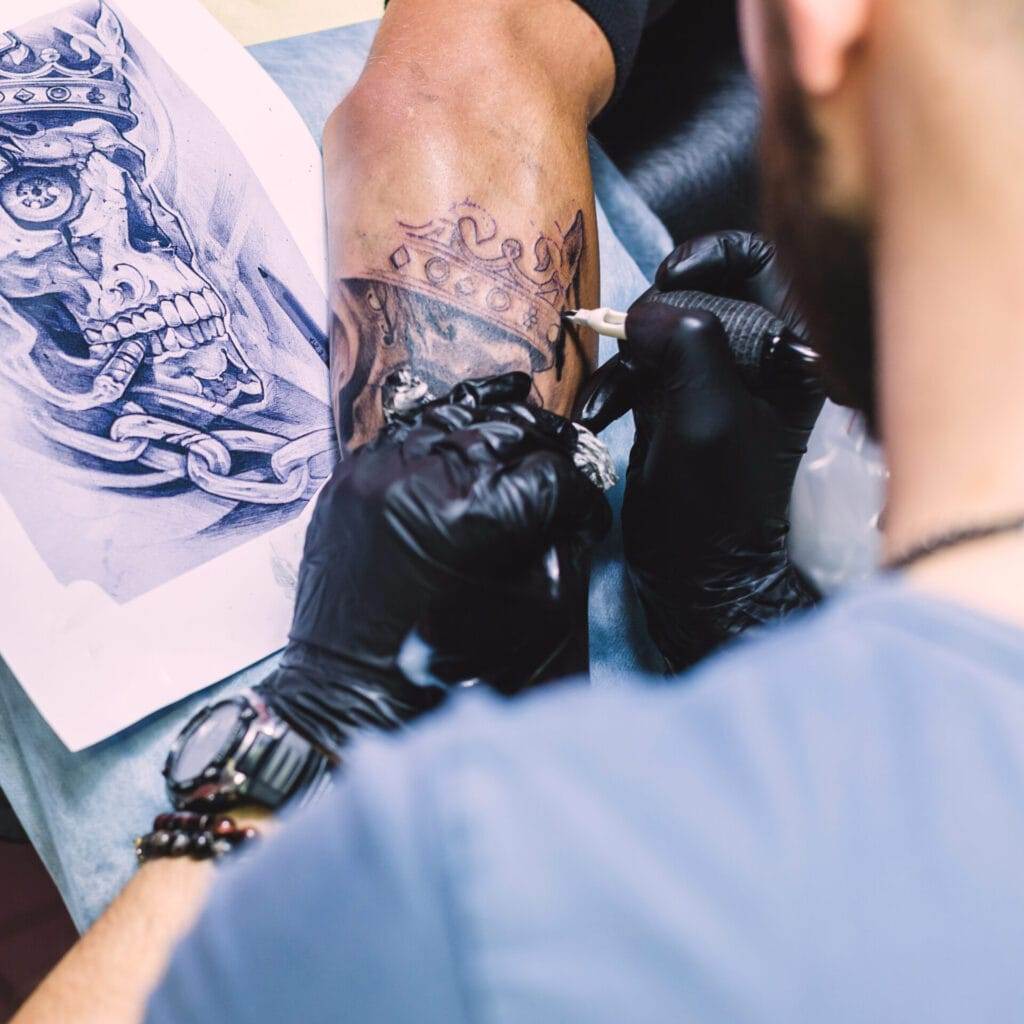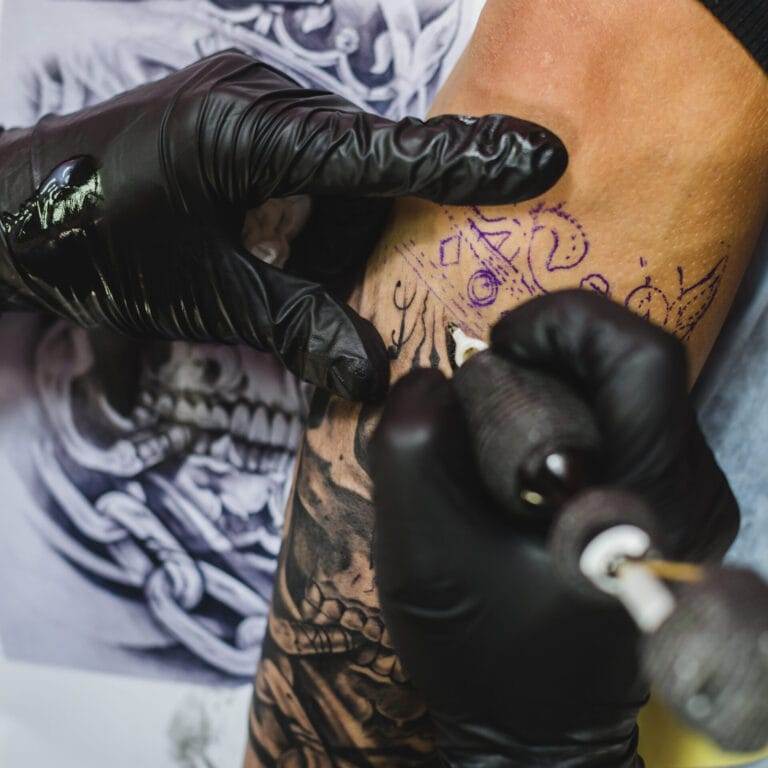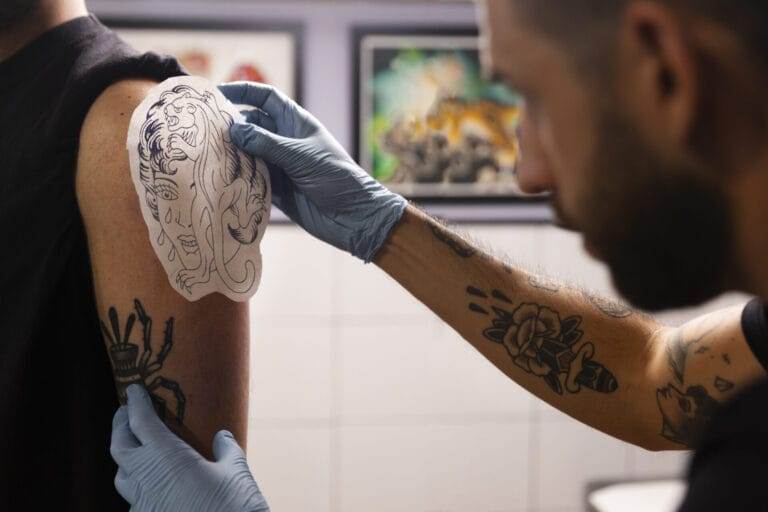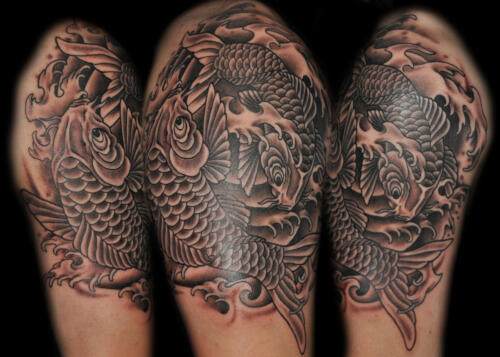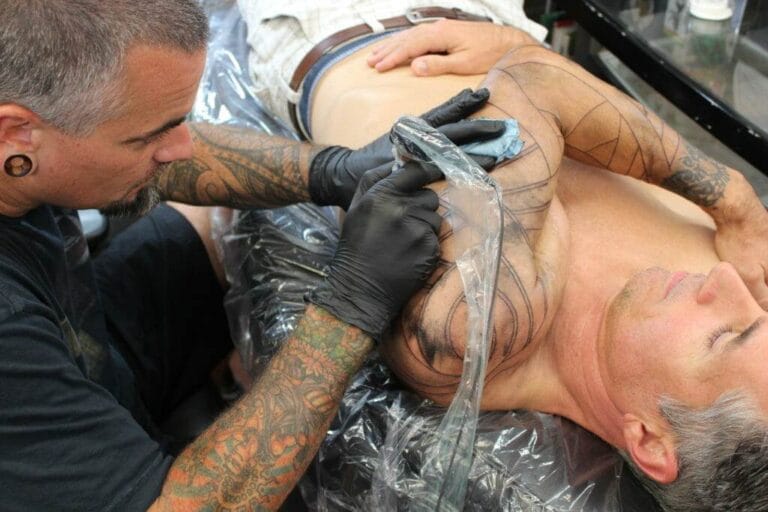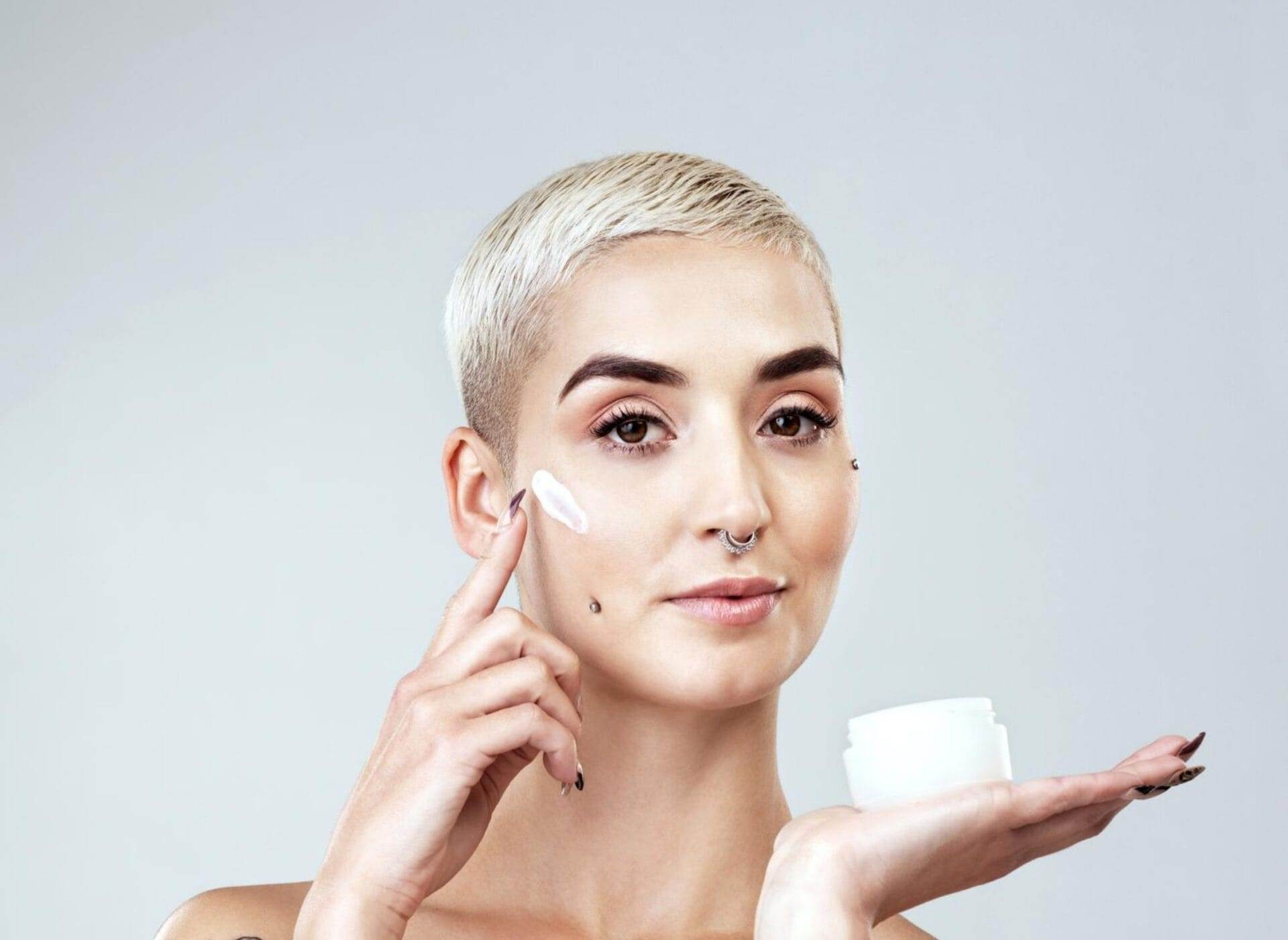
Tattoos are a form of art that can be a beautiful and meaningful expression of oneself. However, over time, tattoos can fade and lose their vibrancy. This is where touch-ups come in. Regular touch-ups are essential for maintaining the quality and longevity of a tattoo. They help to keep the colors vibrant, lines crisp, and overall appearance fresh.
The Science Behind Tattoo Fading: Understanding the Factors at Play
Tattoo fading is a natural process that occurs over time due to various factors. One of the main culprits is sun exposure. UV rays from the sun can break down the pigments in the tattoo ink, causing it to fade. This is why it is important to protect your tattoos from the sun by applying sunscreen or covering them up when exposed to direct sunlight.
Another factor that contributes to tattoo fading is aging. As we age, our skin naturally loses elasticity and becomes thinner. This can cause the tattoo to appear dull and faded. Additionally, the type of skin you have can also affect how quickly your tattoo fades. People with oily skin tend to experience faster fading compared to those with dry or normal skin.
How Often Should You Get a Touch-Up? A Guide for Tattoo Maintenance
The frequency of touch-ups depends on several factors, including the age and quality of the tattoo. As a general guideline, it is recommended to get a touch-up every 2-5 years. However, this can vary depending on how well you take care of your tattoo and how quickly it fades.
If your tattoo is relatively new and still looks vibrant, you may not need a touch-up for several years. On the other hand, if your tattoo is older and has already started to fade, you may need more frequent touch-ups to maintain its appearance.
Signs Your Tattoo Needs a Touch-Up: Identifying Fading and Blurring
There are several visual cues that indicate a tattoo is in need of a touch-up. One of the most common signs is fading. If the colors of your tattoo have become dull or washed out, it may be time for a touch-up. Another sign is blurring or smudging of the lines. Over time, the lines of a tattoo can become less defined and lose their sharpness. This can be fixed with a touch-up to reestablish the clarity of the design.
The Benefits of Regular Touch-Ups: Keeping Your Tattoo Vibrant and Clear
Regular touch-ups offer several benefits for maintaining the vibrancy and clarity of your tattoo. Firstly, they help to keep the colors looking fresh and vibrant. By replenishing the pigments that have faded over time, a touch-up can bring back the original intensity of the tattoo.
Secondly, touch-ups can help to maintain the clarity and sharpness of the design. As mentioned earlier, over time, the lines of a tattoo can become blurred or smudged. A touch-up can redefine these lines, making the design look crisp and clear once again.
Lastly, regular touch-ups can help to prevent further fading and deterioration of the tattoo. By addressing any signs of fading early on, you can prolong the life of your tattoo and ensure it continues to look its best for years to come.
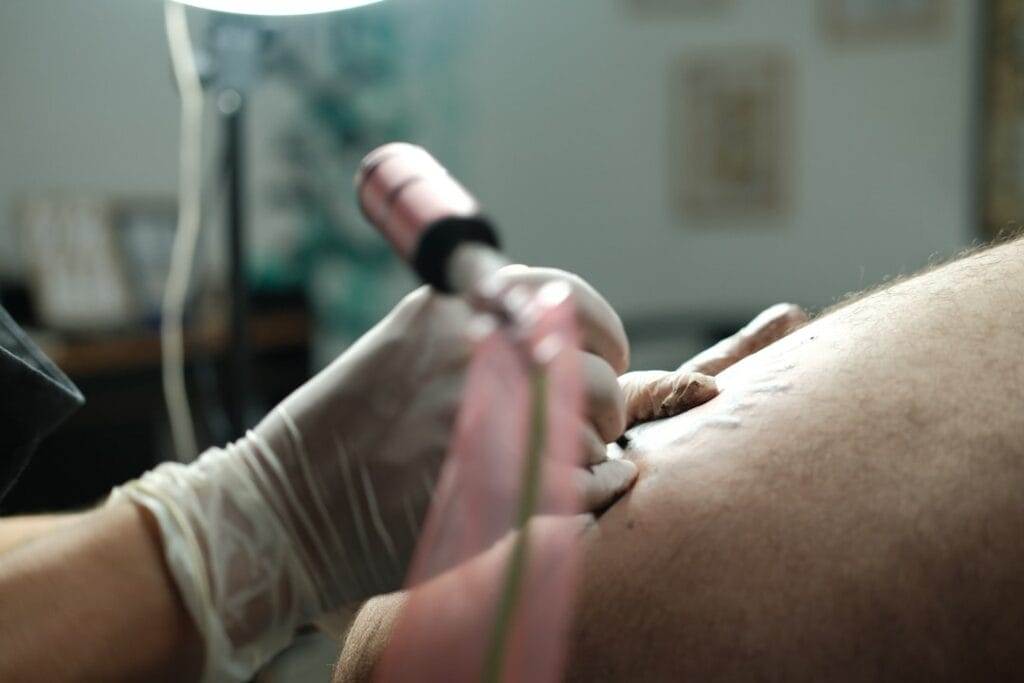
How to Prepare for a Touch-Up: What to Expect and How to Care for Your Skin
Before getting a touch-up, it is important to properly prepare your skin. This includes keeping the area clean and moisturized in the days leading up to your appointment. Avoid exposing the tattoo to excessive sunlight or tanning beds, as this can cause further fading.
During the touch-up process, you can expect some discomfort, similar to when you initially got the tattoo. The artist will use a tattoo machine to go over the areas that need touching up, adding more ink and redefining the lines if necessary. Afterward, it is important to follow the aftercare instructions provided by your artist. This may include avoiding excessive sweating, swimming, or exposing the tattoo to direct sunlight for a certain period of time.
Touch-Up Techniques: Different Methods for Different Tattoos
The techniques used for touch-ups can vary depending on the type of tattoo and the extent of the touch-up needed. In some cases, a simple color refresh may be all that is required. This involves adding more ink to faded areas to restore the vibrancy of the colors.
For tattoos that have blurred or smudged lines, a technique called re-lining may be used. This involves going over the existing lines with a fine needle to redefine them and make them appear sharper.
In more extreme cases where significant fading or distortion has occurred, a complete rework of the tattoo may be necessary. This involves essentially redoing the entire design to bring it back to its original state.
The Cost of Touch-Ups: Is It Worth the Investment?
The cost of touch-ups can vary depending on factors such as the size of the tattoo, the extent of the touch-up needed, and the experience of the artist. Generally, touch-ups are less expensive than getting a new tattoo, as they require less time and ink.
While touch-ups do come with a cost, they are often worth the investment in maintaining the quality of your tattoo. By addressing any signs of fading or blurring early on, you can prevent further deterioration and potentially save yourself from needing a more extensive and costly rework in the future.
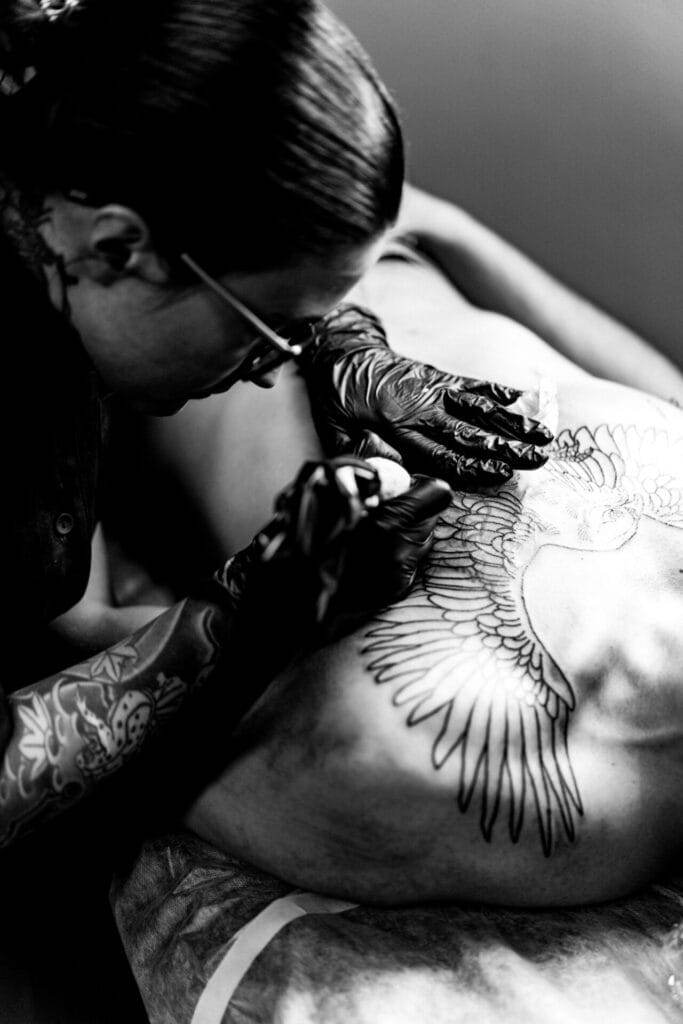
Touch-Ups for Cover-Up Tattoos: Maintaining the Integrity of the Design
Cover-up tattoos are a popular choice for those looking to hide or transform an existing tattoo. However, just like any other tattoo, cover-ups can also fade over time. This is why touch-ups are important for maintaining the integrity of the design.
Regular touch-ups can help to keep the colors of a cover-up tattoo looking vibrant and ensure that the original tattoo remains fully concealed. It is important to choose an experienced artist for touch-ups on cover-up tattoos, as they will need to carefully match the colors and lines of both the original tattoo and the cover-up design.
Regular Touch-Ups for Lasting Tattoo Artistry
In conclusion, regular touch-ups are essential for maintaining the quality and longevity of a tattoo. They help to keep the colors vibrant, lines crisp, and overall appearance fresh. By addressing any signs of fading or blurring early on, you can prolong the life of your tattoo and ensure it continues to look its best for years to come. Remember to choose an experienced artist for your touch-ups and follow proper aftercare instructions to ensure optimal results. With regular touch-ups, your tattoo can remain a beautiful and meaningful expression of yourself for a lifetime.

